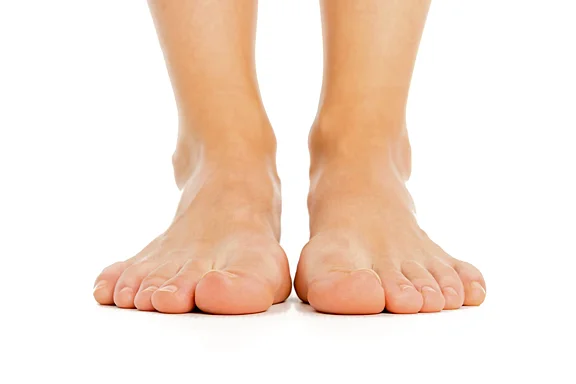Table of Contents
What Are Flat Feet?
The arch of your foot is its main supportive structure. If this arch loses strength, the bony framework begins to collapse, causing your foot to flatten. Like a sagging bridge, the weakness in the middle strains the joints at both ends of your foot.
Flat foot is a common condition where the foot’s arch is flattened and the entire sole of the foot touches the ground when standing. Your arch helps absorb force during weight-bearing activities like running and walking.
Flat foot tends to run in families. An individual may be born with flat feet, or they can be caused by nerve issues, rheumatoid arthritis, damaged tendons or an injury. Those with flat feet should avoid high-impact sports like running and basketball.
Adult-acquired flatfoot is a painful condition caused by inflammation of the posterior tibial tendon. If untreated, this issue can lead to chronic pain and even serious disability. Those with flat feet are predisposed to this tendonitis.
Flat Feet - Causes
Flat Feet - Symptoms
Discomfort from flat feet often doesn’t appear for years. At some point, pain may be felt and walking may become awkward as increasing strain is put on your feet and calves.
You may have no symptoms with flat feet, but this condition can cause:
- Easily-tired feet
- Aches and pains in the arches and heels
- Difficulty standing on tip-toe
- Hip, leg and back pain
- Swollen soles
Related Problems
Treating Flat Feet
If you must limit your activities because of pain, non-invasive therapies include:
- Stretching exercises
- Physical therapy
- Icing
- Supportive taping or bracing
- Anti-inflammatory medication
- Custom-fitted orthotics to support the arch
- Wearing supportive shoes
We may discuss surgery with you to relieve pain and restore normal function if the foot is damaged or if the pain is severe.
Medical History and Physical Exam
Testing
How Does My Podiatrist Treat Flat Feet?
Nonsurgical Care
- Strapping: Taping your feet may help by temporarily maintaining the proper position of your feet.
- Orthotics: Custom orthotics can readjust the weight-bearing position of your feet. Soft, semi-flexible, or rigid inserts may be used, depending on your weight and physical activity.
- Medication: You may be given anti-inflammatory medication to temporarily relieve pain caused by flat feet.



